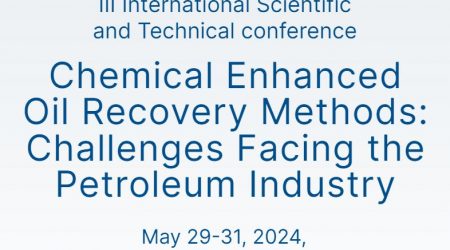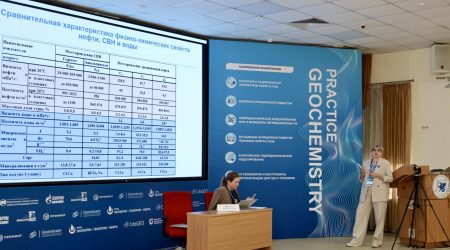Matvey Semyonov speaks about gas hydrate research at Production, Preparation, and Transportation of Oil and Gas International Conference in Tomsk
His plenary report Research of Hydrate Formation of Associated Petroleum Gas was featured at the big event dedicated to the 55th anniversary of the Institute of Petroleum Chemistry of the Siberian Branch of the Russian Academy of Sciences.
The researcher shed light on the influence of promoters on the hydrate formation process.
“A significant portion of associated petroleum gas is still flared at oil fields, leading to the loss of a valuable resource and an increased carbon footprint. One promising solution to this problem is converting the gas into a solid hydrate state. Technologies are needed to accelerate the hydrate formation process, increase the conversion of water to hydrate, and improve the stability of the resulting hydrates during storage. Particularly promising is the use of kinetic promoters with surfactant properties, which significantly accelerate the growth of hydrate phases without altering the thermodynamic conditions of their formation,” noted Dr Semyonov.
The utilization of surfactants is also concomitant with additional risks linked with uncontrolled hydrate formation in pipelines and oilfield equipment.
“In field conditions, small amounts of surfactants in water contacting with gas can provoke rapid hydrate plug formation, which blocks the pipes and increases pressure. As a result, costly repairs may be required,” added the scientist.
Thermobaric properties hydrate formation depend on the content of associated petroleum gas and water mineralization.
“Using data from a specific well at one of the fields—reservoir pressure and temperature, associated petroleum gas and water composition—we recreated the well’s conditions in the laboratory. Using modeling, we determined under which conditions the risk of gas hydrate formation increases and under which it decreases. Our goal is to determine the parameters under which gas hydrates from associated petroleum gas in this well will not form,” he shared.
Every deposit has its unique characteristics of APG, humidity, reservoir pressure, and temperature. That’s why individual evaluations for risk management of each reservoir are needed.










